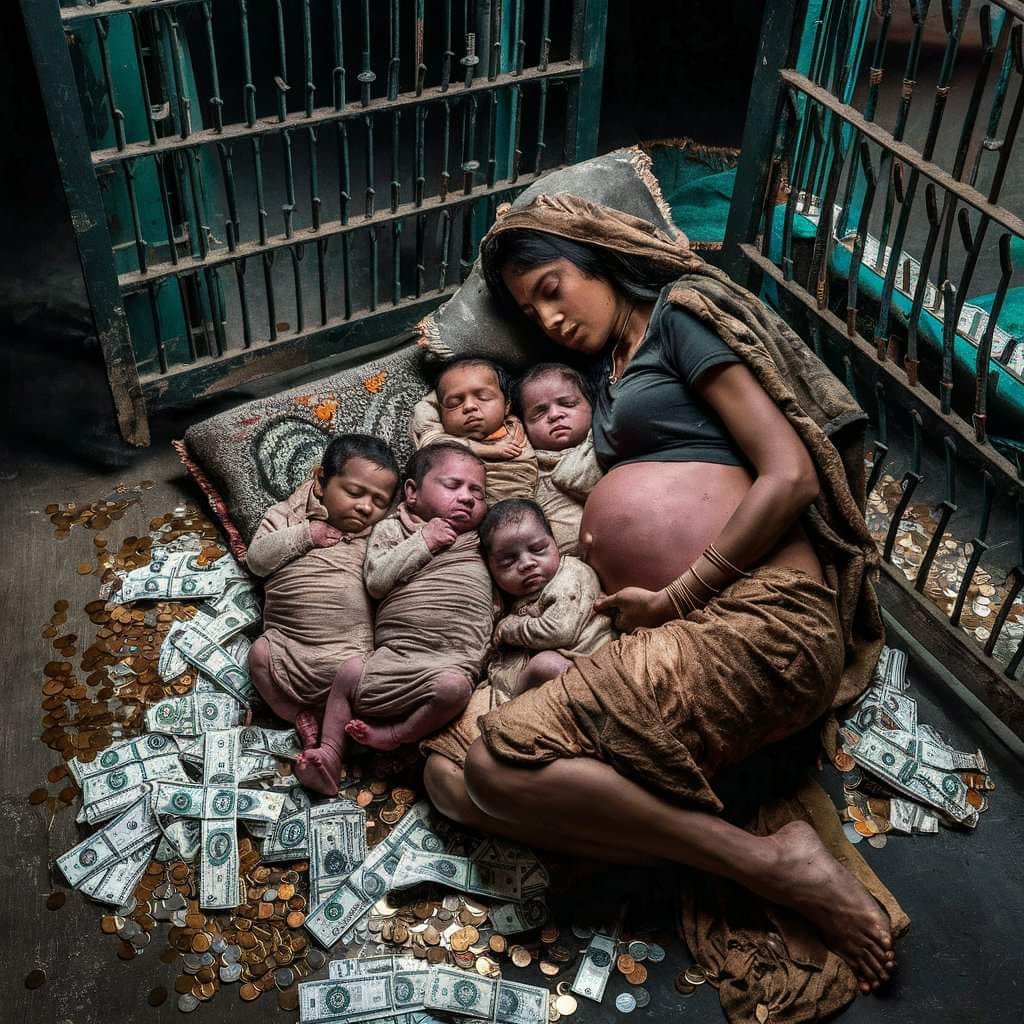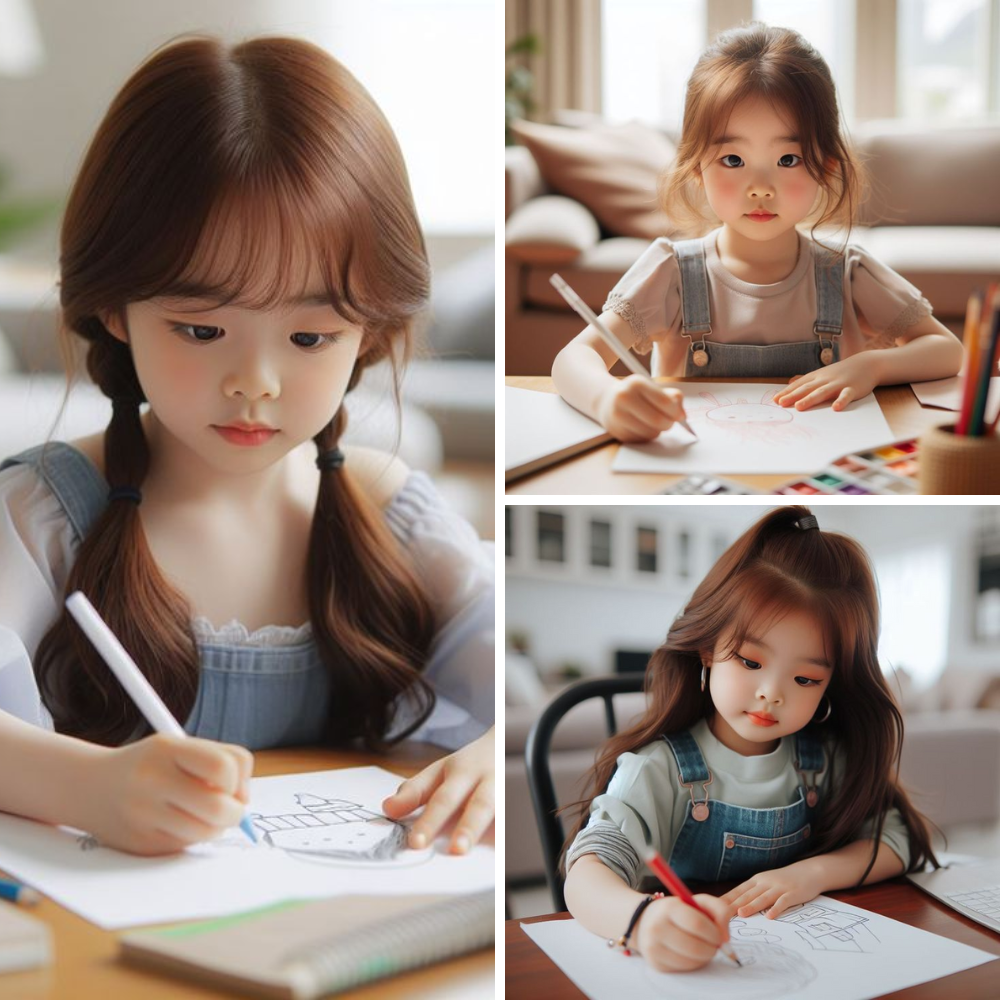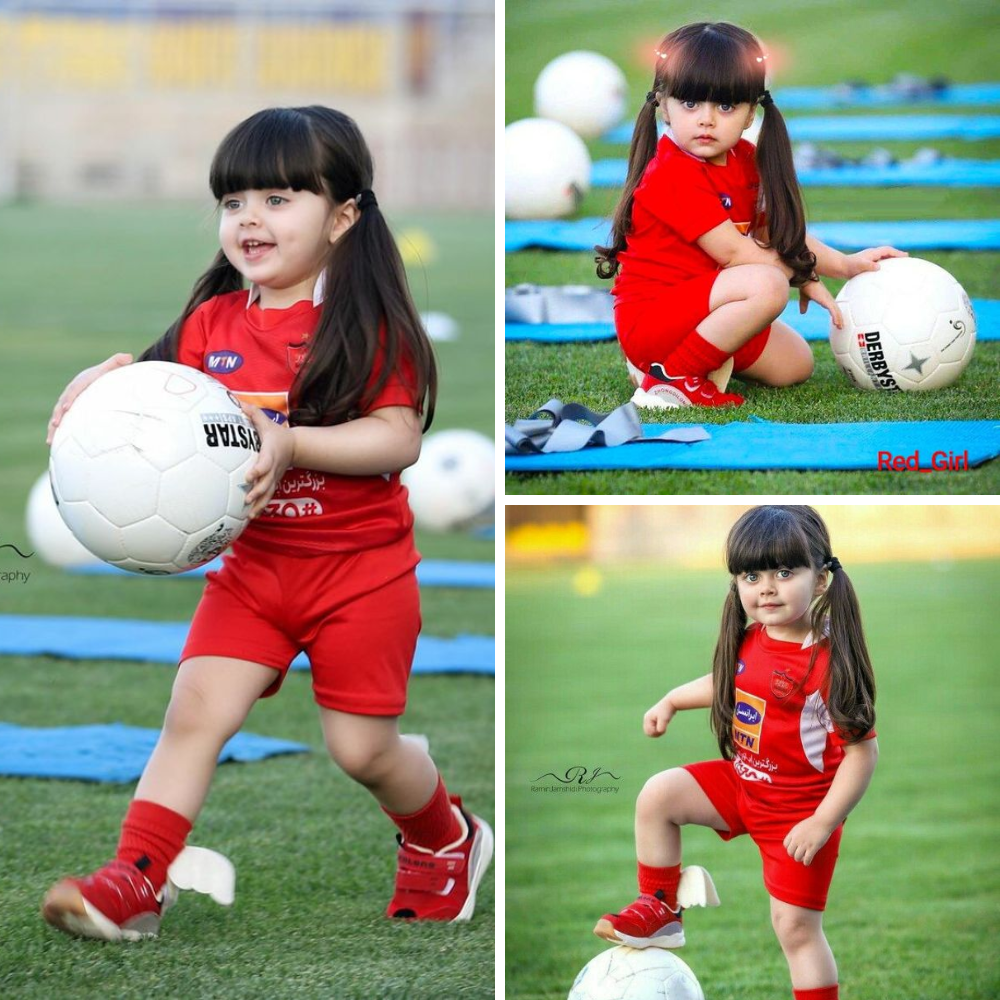In this striking and poignant image, a young mother lies serenely amidst her newborn quintuplets, encapsulating a powerful narrative of life, hope, and the stark realities of economic disparity. The scene is set in a dimly lit room, with the mother and her babies surrounded by a surreal mix of money and coins, suggesting a complex interplay between poverty and wealth.
The mother, appearing exhausted yet peaceful, is the heart of this tableau. She reclines on a makeshift bed of tattered cloths and cushions, her pregnant belly still prominent, hinting at the possibility of more children on the way. Her dark hair cascades around her, framing a face that speaks of both struggle and resilience. Her attire is simple and worn, reflecting a life of hardship and survival.
Nestled closely around her are five swaddled infants, each one a tiny, vulnerable being, dependent on her for sustenance and warmth. Their peaceful expressions, with eyes closed in sleep, contrast with the gritty reality of their surroundings. The innocence of these newborns, wrapped in rough fabric, underscores the tender yet precarious start to their lives.
Scattered around them, almost carelessly, are numerous dollar bills and coins. This stark juxtaposition of wealth and poverty creates a powerful visual metaphor. The money, which in another context could symbolize prosperity and comfort, here lies almost uselessly amidst a scene of evident deprivation. It raises questions about the true value of wealth and the ironies of economic disparity.

The background is dominated by the image of barred gates, adding an additional layer of symbolism. These bars could signify the barriers and limitations faced by those born into poverty, a physical representation of the societal constraints that keep people trapped in cycles of deprivation. The faint light filtering through hints at the outside world, a world that seems tantalizingly close yet out of reach.
This image powerfully evokes themes of maternal love, resilience, and the stark contrasts between wealth and poverty. The mother, despite her evident exhaustion, exudes a quiet strength, her body a shield for her children against the harsh realities of their environment. Her presence is a testament to the sacrifices and unconditional love that define motherhood.
In the broader context, this image can be seen as a commentary on the human condition, particularly the ways in which economic disparity impacts lives from the very moment of birth. It challenges the viewer to reflect on the societal structures that allow such stark inequalities to exist and persist.
In conclusion, this pH๏τograph is not just a depiction of a mother and her children; it is a powerful narrative that speaks volumes about love, survival, and the ironies of wealth in the face of poverty. It invites viewers to look beyond the surface, to consider the deeper stories and systemic issues that shape the lives of individuals like the mother and babies depicted here. This image is a haunting reminder of the resilience of the human spirit and the profound, often unspoken, connections between motherhood and the fight for a better life.




